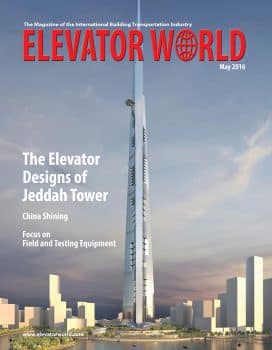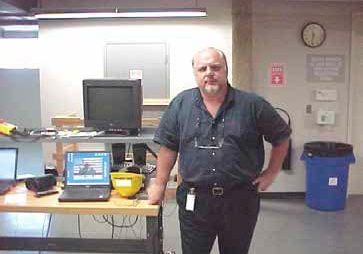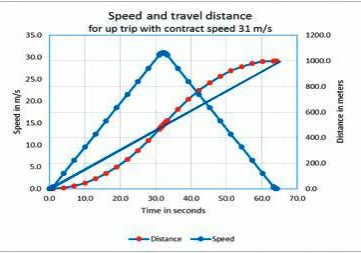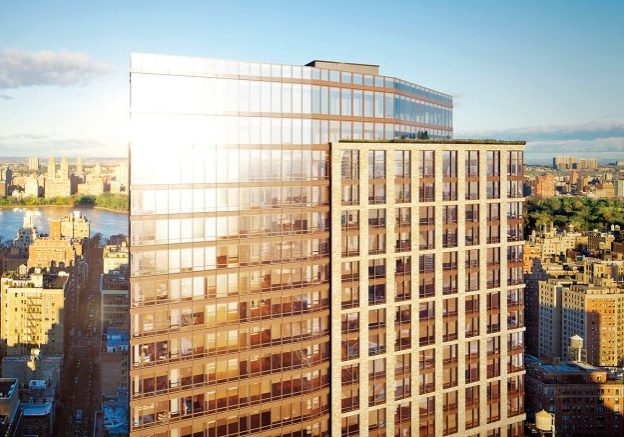Outlining the rationale and steps for mandatory daily startup procedures
Injuries occur about 15 times more frequently on escalators than elevators. About 10,000 escalator-related injuries per year result in emergency-room treatment in the U.S. Most of these accidents can be avoided if safety issues are addressed. People who use escalators generally do not recognize the risks and possible dangers associated with these devices, and some escalator service technicians do not consistently adhere to safety protocol. The fact that serious or fatal injuries continue to occur globally underscores the need for diligent implementation of safety measures at all levels.
The building owner is ultimately responsible in the event of an accident on an elevating device. In many countries and jurisdictions, in addition to shutting down the equipment for investigation, both owner and contractor are required to report the incident to locally designated authorities. In Ontario, Canada, for example, all owners, contractors and mechanics are legally required to promptly report incidents to the Technical Standards & Safety Authority.
A leading cause of accidents is unsafe riding practices, which can be reduced by installing appropriate guarding, as well as training building staff. Faulty design, deficient guarding or damaged handrails can lead to an accident.
Lack of proper maintenance is one cause that can be controlled. Effective maintenance plays a crucial role in the safety of the riding public. Any component operation malfunction can potentially cause an accident. While the primary responsibility for maintaining escalators rests with contractors and maintenance providers, there are many aspects with which the building owner and managers must be acquainted. (Accidents attributable to inadequate maintenance will be discussed later in this article.)
There are many parts that must be inspected and maintained by the contractor to ensure the escalator works properly and safely. The competitive nature of the maintenance service market has increasingly focused on cost reduction to protect profit margin, which unfortunately translates to lack of replacing worn parts or to a mechanic not spending the necessary time to perform critical tests. The net result is increased risk to the riding public.
To ensure all escalators are in safe working condition, jurisdictions periodically update legislative codes governing operation and maintenance. Owners and managers are responsible for the performance of the maintenance contractor and the condition of the elevating devices. According to ASME A17.1/CSA B44 Safety Code for Elevators and Escalators, a Maintenance Control Program (MCP) must be provided by the escalator maintenance contractor. The MCP includes requirements for regularly scheduled maintenance tasks, such as annual and five-year tests. Recordkeeping is required in a device specifier logbook, which outlines these tasks and includes manuals describing special requirements. The MCP is an important document and remains the property of the owner to demonstrate that the equipment has been maintained in accordance with safety requirements of the code and local regulations.
It is important for the owner to regularly inspect the physical devices and verify that the MCP is up to date. Since most owners are not trained to assess these items, it is recommended that a qualified third-party consultant be retained to audit not only the equipment condition, but also the MCP records and performance of the maintenance contractor. Hiring a consulting company can help owners develop a closer and more efficient relationship with maintenance contractors.
This article provides important information regarding owner responsibilities, as well as simple inspections that can identify escalator-safety concerns before an accident occurs.
Escalator and Moving Walk Startup
Section 8.6.11.6 of A17.1/B44 prescribes that the escalator owner, or the person(s) authorized by the owner, shall perform certain startup inspections and tests at least daily and sign off the findings in a permanent record. The check procedure is as follows:
- Prior to starting the unit, observe the steps or pallets and both landing areas to ensure no persons are on the unit or about to board. Run the unit away from the landing.
- Verify correct operation of the starting switch.
- Verify correct operation of the stop buttons.
- Verify correct operation of each stop-button cover alarm, if furnished.
- Observe that steps stop within the distance on the daily stopping distance check sign (usually one step length or less).
- Visually examine the steps or treadway for damaged or missing components, the combplates for broken or missing teeth, and the skirt or dynamic skirt panels and balustrades for damage.
- Verify that both handrails travel at more or less the same speed as the steps or the treadway, are free of damage and pinch points and that entry guards are in place.
- Visually verify that all steps, pallets or the treadway is properly positioned.
- Verify that ceiling intersection guards, antislide devices, deck barricades and caution signs are securely in place.
- Verify that demarcation lighting is illuminated, if furnished.
- Check for uniform lighting on steps/tread.
- Verify that the safety zone is clear of obstacles and the landing area and adjacent floor area are free from foreign matter and slipping or tripping hazards.
- Check for any unusual noise or vibration during operation.
If any of these conditions are unsatisfactory, the unit shall be placed out of service. Barricade the landing areas and notify the responsible party of the problem.
The requirements of the pre-start checklist are intended to improve escalator safety and mitigate accident risk. This article will review each of the requirements of this startup procedure in detail, along with implications of deficiencies or nonconformances.
Brakes
There are two key failures with respect to brakes: sudden stop and brake failure. If the escalator stops suddenly, passengers may lose balance and fall. If the brakes of a fully loaded descending escalator fail to hold, the device will pick up speed, causing passengers to collide and fall at the bottom landing.
Ensure the escalator brakes operate properly during the startup procedure. Run the escalator in the down direction with no load, and, upon applying the brake, the device should stop within a short distance. The stopping distance is specified by the manufacturer/contractor according to code, but typically stopping within one step is reasonable for most installations.
During peak periods, manage congestion to minimize overloading, which may lead to brake failure in the event of a stop command. Monitor traffic and allocate more escalators to accommodate volume flow if necessary. This will reduce the risk of brake malfunction and prevent accidents associated with crowded escalators.
Step/Skirt Clearance
Horrible accidents can result if a passenger’s foot or clothing become trapped between the escalator skirt and a step. Children are more prone to this kind of accident. Shoes can easily be drawn into the gap between an escalator skirt and moving steps.
Ensure that the gap between the steps and skirt panels is within allowable limits. A17.1/B44 prescribes that step-to-skirt clearance shall be a maximum of 4 mm (0.16 in.) and that the sum of the clearance on both sides shall not exceed 7 mm (0.28 in.). It should be noted that different clearance limits may be allowed depending on the code in effect on the date of installation. Keep riders a safe distance from the gap by installing and maintaining skirt brushes/deflector devices.
Ensure that the step-to-skirt clearance is within code requirements and that steps move freely adjacent to the skirt. Skirt panels need some rigidity with a surface finish that is smooth and relatively slippery. To quantify the skirt-to-step gap and the skirt panels’ overall smoothness and slipperiness, use the skirt/step performance index (SSPI), which is a calculation involving the friction between moving steps and stationary skirt panels. Owners should ensure that escalator maintenance contractors perform an SSPI test annually and keep results available for inspectors. To meet code requirements, it may be necessary to repair or upgrade existing escalator skirt panels. Installation of skirt brushes may be required if there is no step or skirt deflector.
Handrail
Three common accident scenarios involving handrails are discussed here: entrapment at the handrail entrance, falling due to handrail speed change and the crushing of fingers between the handrail and balustrade or building wall.
Fingers or clothing can become trapped in the handrail entrance portal. This is generally precipitated by unsafe riding. Curious about the disappearing handrail, unsupervised children can have their hands drawn into the handrail entrance portal.
A protective cover with an integral safety switch must be installed at the handrail entry on each side of the escalator at both the top and bottom of the flight. If an object approaches the handrail entry or becomes caught between the handrail and entry portal, the safety switch will actuate to stop the escalator. The function of the handrail-entry safety switch should be verified by pressing the protective cover and confirming the escalator stops.
If the speed of the handrail differs excessively from that of the escalator steps, or if the handrail stops abruptly while the steps remain in motion, riders traveling on the escalator may fall and sustain serious injuries. Verify that both handrails travel at more or less the same speed as the steps and are free from damage or pinch points. Stand at the top landing plate, and while the escalator descends, verify that the handrail cannot be stopped by grasping it.
The handrail speed-monitoring device should stop the escalator when the speed of either the handrail deviates from the step speed by 15% for 2-6 s. If a speed-monitoring device is not presently installed, such a safety feature should be considered.
While grasping the moving handrails, fingers may hit the side wall or become trapped between the handrail and escalator balustrade. Cracked or damaged handrails may present a pinching hazard.
Verify that the horizontal distance between the handrail and adjacent wall is at least 100 mm (4 in.). This distance should not be reduced by installing any object on the wall adjacent to the escalator.
Inspect handrails for large and deep cracks that can trap fingers. Depending on an escalator’s working condition, the handrail surface may show signs of wear, wrinkling or cracking after seven to 10 years.
Emergency Stop Button
Emergency stop buttons play a critical role in rider safety. Actuating the emergency button should stop the escalator immediately. If a passenger falls or becomes trapped between moving parts, failure to immediately arrest the motion of the escalator will exacerbate injuries. Emergency stop buttons must be visibly located on the right side (facing the escalator) and readily accessible at both top and bottom landings.
To comply with A17.1/B44, emergency stop buttons shall be equipped with a transparent cover that can be easily lifted or pushed aside. When the cover is moved, an audible warning signal shall be activated. The cover shall be self resetting.
Combs and Combplates
The area adjacent to combs and the combplate is widely known as the “tripping zone.” Serious injuries can result if clothes, shoes or toes become trapped between combs and moving steps. A child falling in this zone can have fingers pulled into the gap between the combs and steps. Certain requirements are stipulated in A17.1/B44 to be verified at least daily as part of the escalator startup procedure.
Combs with any broken teeth shall be repaired or replaced. Where two adjacent teeth are missing, the escalator shall be removed from operation until the broken combs are replaced. Combs shall be adjusted and maintained in mesh with the slots in the step surface such that the points of the teeth are always below the upper surface of the treads.
For units installed under A17.1b-1992 and later editions, a comb-step impact device, which should stop the escalator in the event an object is caught on the combs, must be installed. The operation of these devices shall be tested annually to ensure compliance with the code, including the force required to actuate the stop command.
There shall be a visual contrast between the combs and the steps, achieved by color, pattern or texture. If the color of the combs becomes worn, the comb should be repaired or replaced.
Steps
From a functional perspective, the step is the most important part of an escalator. Since the step directly transports a passenger from one level of a building to another, it is critical to maintain adjustments and physical condition. Passengers can slip and fall on steps or have their clothes or shoes trapped between adjacent steps. The tread surface must have grooves, provide a secure foothold and be slip resistant.
The distance between adjacent steps in any position should be a maximum of 6 mm where steps are traveling horizontally at the end of the escalator. Repair or replace steps with broken treads. Steps with dented or damaged risers shall be repaired or replaced. Worn or damaged steps that do not provide proper engagement with the combplates shall be repaired or replaced.
There shall be demarcation lines on the step tread along the back and sides of the step to delineate the division between steps. These lines shall be marked by a yellow strip.
Safety Zone and Floor Plates
Platforms at the top and bottom of an escalator are known as “safety zones.” Numerous accidents have occurred in these areas due to a slippery entrance or exit, insufficient space, floor-plate displacement or inadequate lighting.
Surface contamination resulting in wet or greasy landing plates will cause boarding or disembarking passengers to slip and fall. Worn cleats of the landing plates can also create a slippery surface. Whether caused by spills or lubricant smears, the surface must be cleaned promptly. While that work is in progress, riders must be made aware that the area is wet and be diverted to another route until the plates are sufficiently dry. Worn cleats should be replaced to provide a slip-resistant surface and secure foothold.
A lack of sufficient space in the escalator entry and exit areas can lead to traffic congestion. Overcrowding can lead to riders tripping while queuing up or departing the escalator. The entry and exit zone shall be kept clear of all obstacles. Space shall be provided to accommodate all traffic in the safety zone. According to A17.1/B44, the width of the zone shall not be less than 200 mm (8 in.) wider than the width between the centerlines of the handrails. The length of the zone, measured from the end of the newel, shall not be less than twice the distance between the centerlines of the handrails. Traffic should be controlled to optimize accommodation in the safety zones for a safe volume of riders entering or leaving the escalator.
If the floor plates are not properly secured, they can be displaced while an escalator is being used, and a passenger may fall into the operating mechanism with serious consequences.
Ensure that the floor plates are properly secured to prevent accidental dislodgement by someone stepping into the safety zone. Also, make sure there is no gap between the floor plates, thus presenting a tripping hazard.
Inadequate illumination at the entry and exit safety zones could result in a rider not being able to clearly judge necessary footing while boarding or disembarking the escalator. Any anomaly in the landing-platform area, which might result in a slip or trip hazard, may not be easily discernable without proper illumination. For passengers to step safely onto escalators, the landing floor plates and step band must be adequately lit. According to A17.1/B44, floor-level illumination at the top and bottom landing areas must be at least 50 lux.
Unsafe Riding Practices
Many accidents occur due to unsafe riding practices, so much so that even installing warning signs and barriers cannot prevent them. Unsafe riding practices such as running, jumping, riding on handrails, and taking wheelchairs, carriages or large luggage on escalators have caused numerous accidents resulting in serious injuries. To prevent dangerous activities, devices such as ceiling intersection guards, deck barricades, antislide devices, building handrails and safety signs must be installed.
Areas where the escalator is in close proximity to the building structure, such as walls, pillars, floor intersections or a criss-cross arrangement of adjacent escalators, may lead to an inattentive passenger striking an obstruction or becoming trapped. To prevent riders from colliding with structures, A17.1/B44 requires that deflectors be installed on low deck balustrades where the centerline of the handrail is 350 mm (14 in.) or less from the ceiling or soffit. On high deck balustrades, this guarding shall be installed where the clearance between the edge of the deck and adjacent obstruction is 300 mm (12 in.) or less.
Serious injury often results when a careless rider falls while attempting to hang from the handrail or climb the balustrades. Often, an unsupervised child is implicated. To restrict access to the outer deck on low deck exterior balustrades, A17.1/B44 requires that a barricade be installed at the top and bottom ends of each escalator where the outer deck width exceeds 125 mm (5 in.). The barricade shall extend to a height that is nominally 100 mm (4 in.) below the top of the handrail. Where the escalator is not installed at the edge of the floor surface, a barricade 1,000 mm (40 in.) high and 1,000 mm (40 in.) wide should be installed on the outer deck.
A passenger sliding on the escalator deck can be seriously injured. To deter riders from sliding on the decks of an escalator with high deck balustrades, A17.1/B44 requires that antislide devices shall be provided on decks or combinations of decks when the width of the outer edge is greater than 200 mm (8 in.).
An unprotected excessive space between the building handrail and escalator presents two risks to the riding public: a passenger jettisoned over the side of the escalator due to overcrowding could fall through the gap, and a passenger resting or leaning against the escalator handrail may be thrown from the building edge. To prevent this from happening, the building handrail height must be greater than that of the escalator balustrade and must be extended through horizontal ingress and egress areas of the escalator. The gap between the building handrail and escalator balustrade should be compliant with local building codes.
A17.1/B44 requires that a designated caution sign be located at the top and bottom landing of each escalator, readily visible to the boarding passengers. The pictographic sign shall be enhanced with the following wording: “Caution,” “Passengers Only,” “Hold Handrail,” “Attend Children” and “Avoid Sides.”
The owner of an escalator is responsible for ensuring the safety of riders. From a due diligence perspective, owners should consider retaining a professional escalator consultant to perform a safety and code-compliance audit for their installations. This type of review will simultaneously provide the owner with an independent assessment of maintenance effectiveness with which to judge their contract service with the maintenance company.
Get more of Elevator World. Sign up for our free e-newsletter.









